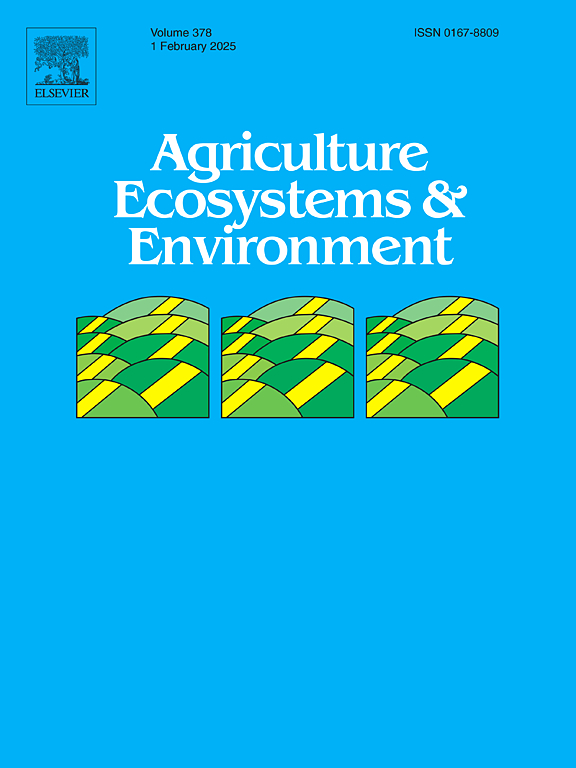Microbially mediated rhizospheric phosphorus turnover promotes wheat yield by enhancing phosphorus bioavailability
IF 6
1区 农林科学
Q1 AGRICULTURE, MULTIDISCIPLINARY
引用次数: 0
Abstract
Wheat is the most important and widespread grain crop. However, the influence of cultivars released in different decades of modern breeding on the rhizospheric microbial community involved in phosphorus (P) cycling, including phoD- and pqqC-harboring microorganisms, remains poorly understood. The objective of this study was to examine the influence of different P fertilization levels (0 and 100 kg ha⁻¹) and soil moisture conditions (well-watered and drought stress) on five major wheat varieties cultivated in Shaanxi, China, which were released between the 1940s and 2010s. We quantified the key indices of rhizospheric P turnover and analyzed the influences of soil P bioavailability on yield and P accumulation. Our results revealed that the newest variety (Changhan 58) accumulated more P and produced more grain yield than the oldest variety (Mazha) did (by up to 79.4 % and 92.6 %, respectively), as the concentration of rhizospheric labile P (resin-P, NaHCO3-Pi and NaHCO3-Po) increased by 1.33–2.03-fold. Correlation analysis of key microbial biomarkers with environmental factors revealed that among them, OTU1486, OTU16602, and OTU9370 were significantly positively correlated with the labile P pool and significantly negatively correlated with NaOH-Po. These findings suggest their potential role in supporting the microbial community assembly and further promoting P mobilization. The results of the PLS![]() PM model revealed that the soil labile-P pool is mainly directly regulated by the phoD-harboring microbial community and the moderately labile-P pool. Moreover, the pqqC-harboring microbial community indirectly regulates the soil labile-P pool by influencing the moderately labile-P pool. This study provides valuable insights for improving P management in wheat production, emphasizing the importance of modern wheat varieties and microbial dynamics in optimizing P use efficiency.
PM model revealed that the soil labile-P pool is mainly directly regulated by the phoD-harboring microbial community and the moderately labile-P pool. Moreover, the pqqC-harboring microbial community indirectly regulates the soil labile-P pool by influencing the moderately labile-P pool. This study provides valuable insights for improving P management in wheat production, emphasizing the importance of modern wheat varieties and microbial dynamics in optimizing P use efficiency.
求助全文
约1分钟内获得全文
求助全文
来源期刊

Agriculture, Ecosystems & Environment
环境科学-环境科学
CiteScore
11.70
自引率
9.10%
发文量
392
审稿时长
26 days
期刊介绍:
Agriculture, Ecosystems and Environment publishes scientific articles dealing with the interface between agroecosystems and the natural environment, specifically how agriculture influences the environment and how changes in that environment impact agroecosystems. Preference is given to papers from experimental and observational research at the field, system or landscape level, from studies that enhance our understanding of processes using data-based biophysical modelling, and papers that bridge scientific disciplines and integrate knowledge. All papers should be placed in an international or wide comparative context.
 求助内容:
求助内容: 应助结果提醒方式:
应助结果提醒方式:


